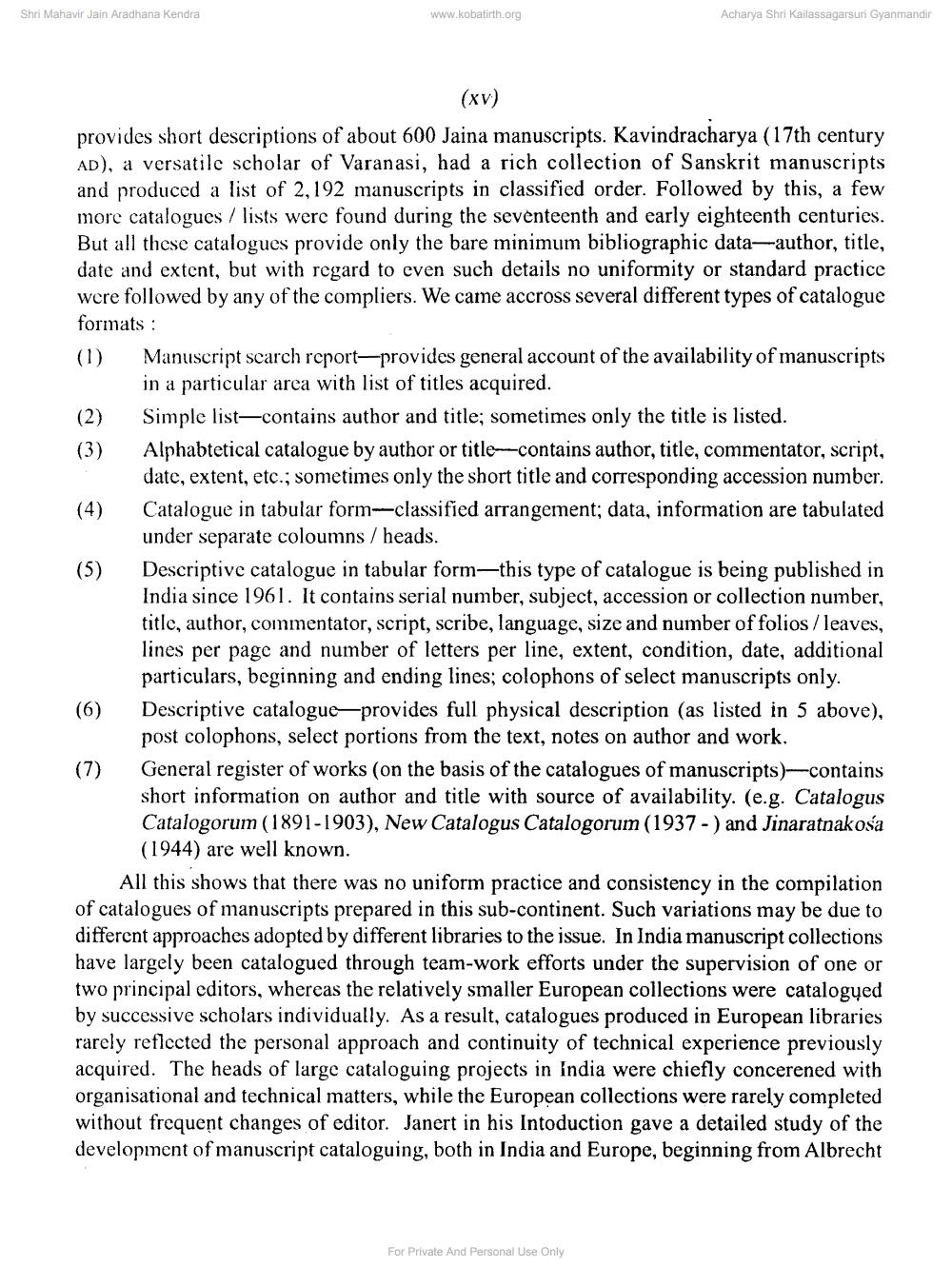________________
Shri Mahavir Jain Aradhana Kendra
(2)
(3)
(xv)
provides short descriptions of about 600 Jaina manuscripts. Kavindracharya (17th century AD), a versatile scholar of Varanasi, had a rich collection of Sanskrit manuscripts and produced a list of 2,192 manuscripts in classified order. Followed by this, a few more catalogues/lists were found during the seventeenth and early eighteenth centuries. But all these catalogues provide only the bare minimum bibliographic data-author, title, date and extent, but with regard to even such details no uniformity or standard practice were followed by any of the compliers. We came accross several different types of catalogue formats:
(1)
(4)
(5)
(6)
www.kobatirth.org
(7)
Acharya Shri Kailassagarsuri Gyanmandir
Manuscript search report-provides general account of the availability of manuscripts in a particular area with list of titles acquired.
Simple list-contains author and title; sometimes only the title is listed. Alphabtetical catalogue by author or title-contains author, title, commentator, script, date, extent, etc.; sometimes only the short title and corresponding accession number. Catalogue in tabular form-classified arrangement; data, information are tabulated under separate coloumns / heads.
Descriptive catalogue in tabular form-this type of catalogue is being published in India since 1961. It contains serial number, subject, accession or collection number, title, author, commentator, script, scribe, language, size and number of folios/leaves, lines per page and number of letters per line, extent, condition, date, additional particulars, beginning and ending lines; colophons of select manuscripts only. Descriptive catalogue provides full physical description (as listed in 5 above), post colophons, select portions from the text, notes on author and work.
General register of works (on the basis of the catalogues of manuscripts)-contains short information on author and title with source of availability. (e.g. Catalogus Catalogorum (1891-1903), New Catalogus Catalogorum (1937-) and Jinaratnakosa (1944) are well known.
All this shows that there was no uniform practice and consistency in the compilation of catalogues of manuscripts prepared in this sub-continent. Such variations may be due to different approaches adopted by different libraries to the issue. In India manuscript collections have largely been catalogued through team-work efforts under the supervision of one or two principal editors, whereas the relatively smaller European collections were catalogued by successive scholars individually. As a result, catalogues produced in European libraries rarely reflected the personal approach and continuity of technical experience previously acquired. The heads of large cataloguing projects in India were chiefly concerened with organisational and technical matters, while the European collections were rarely completed without frequent changes of editor. Janert in his Intoduction gave a detailed study of the development of manuscript cataloguing, both in India and Europe, beginning from Albrecht
For Private And Personal Use Only




